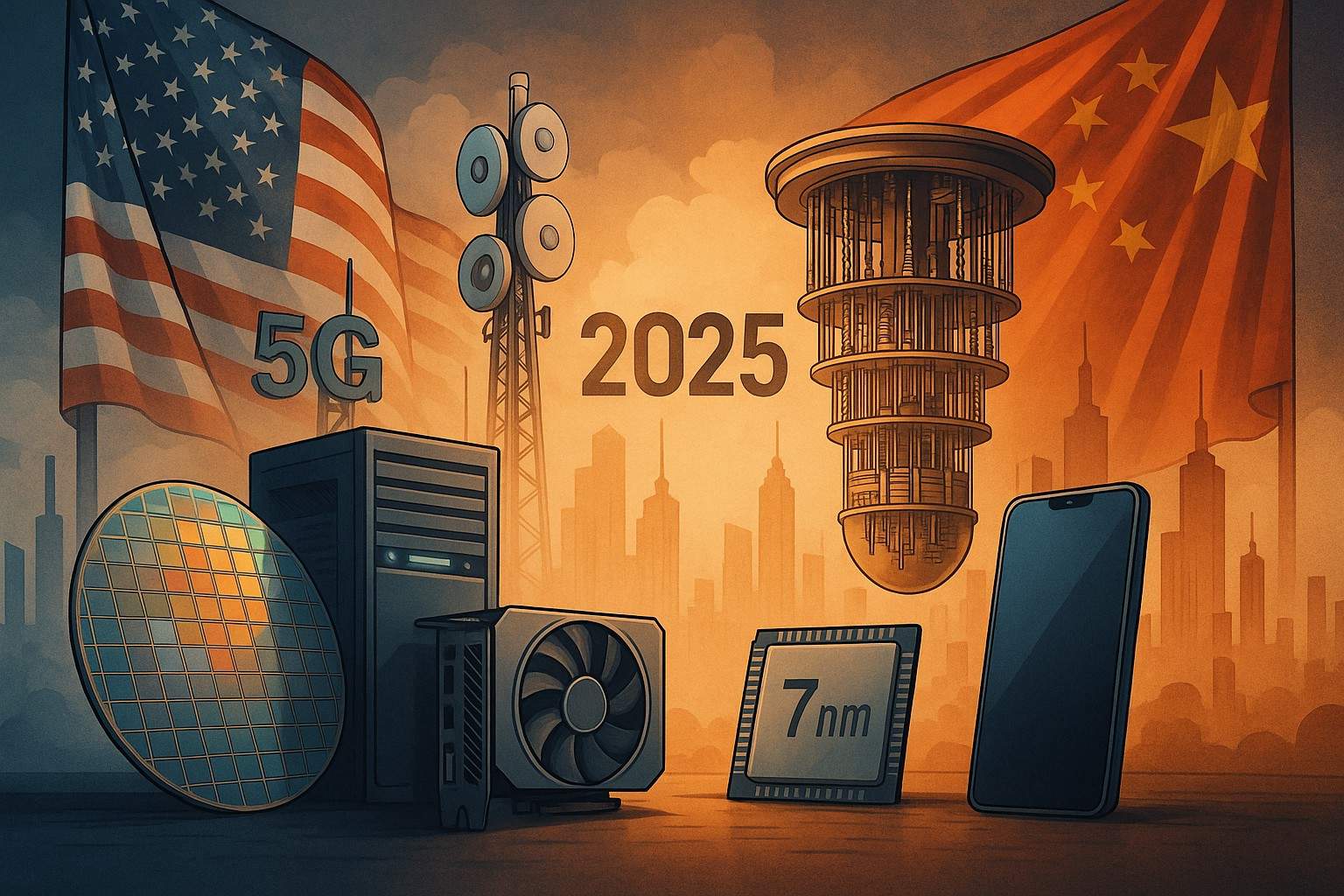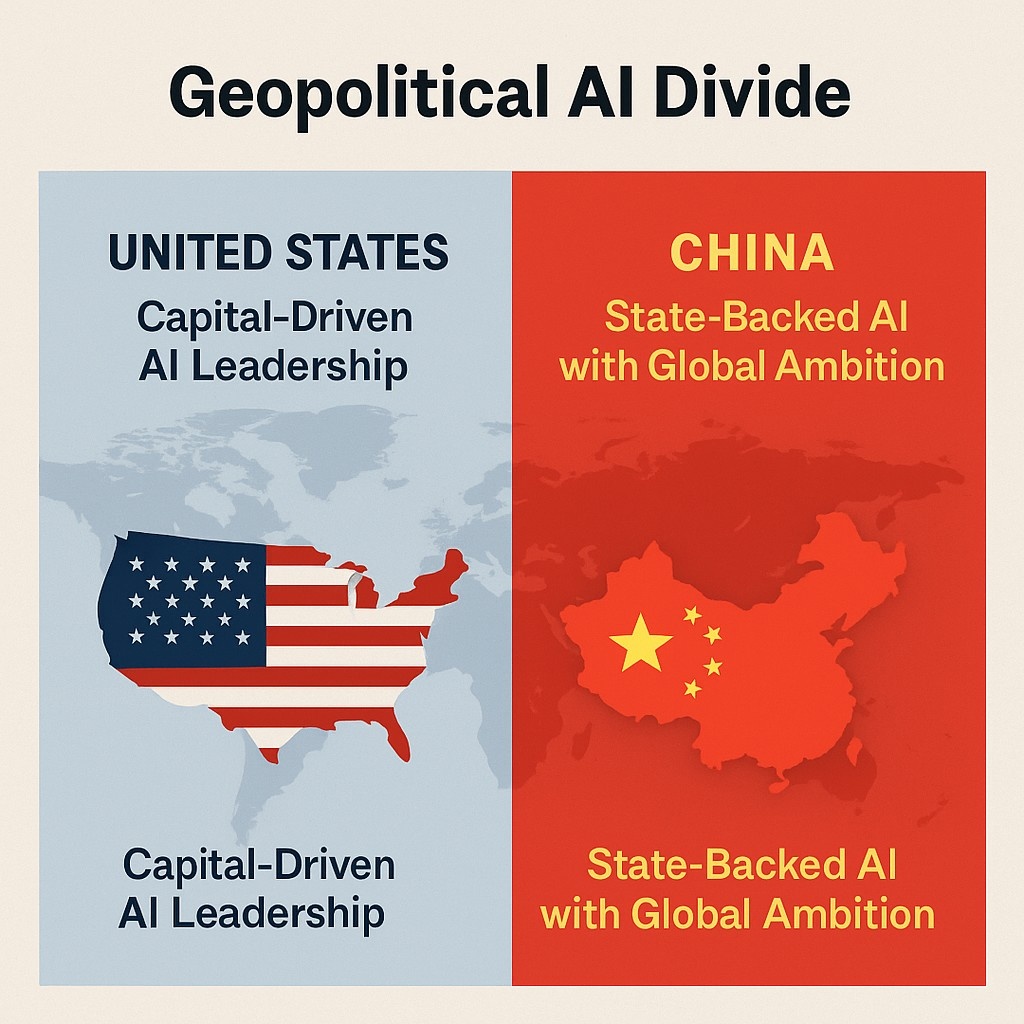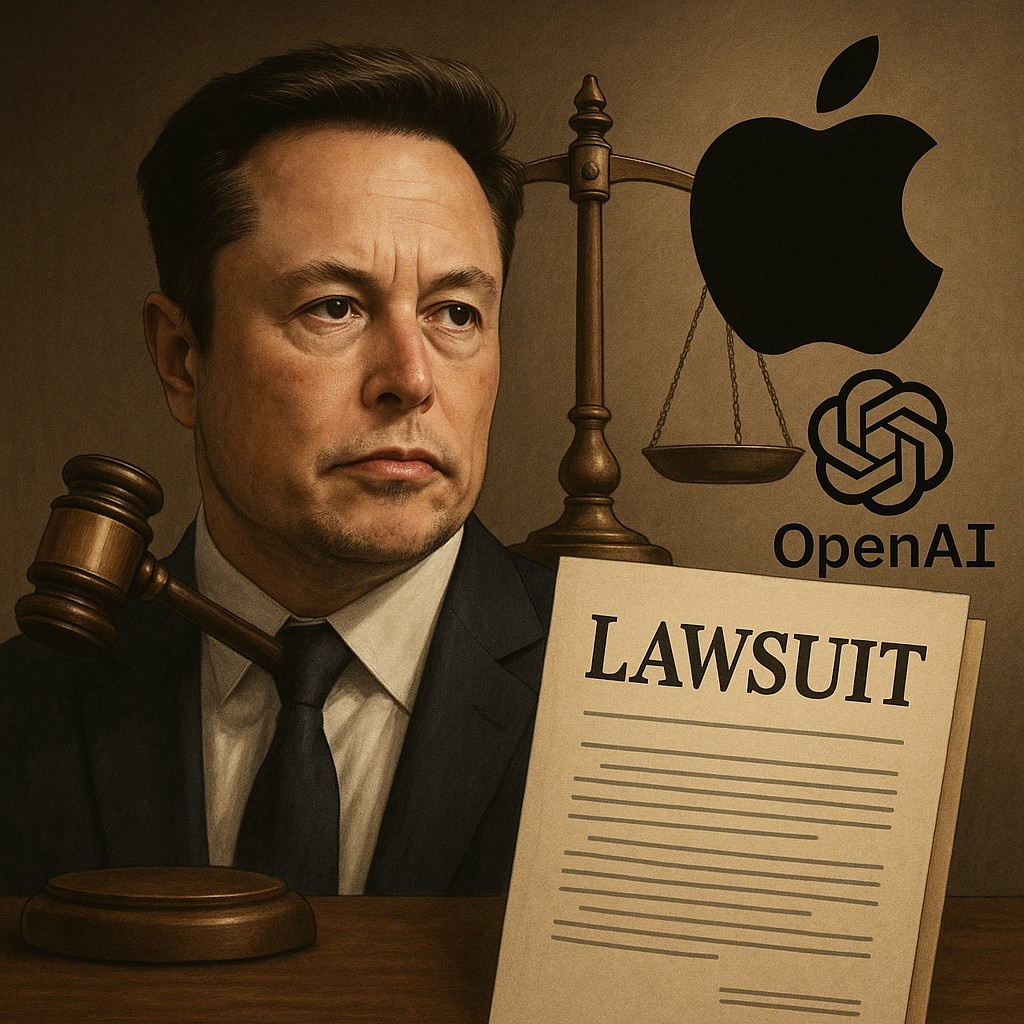Tech’s New Cold War: How the U.S.–China Rivalry is Reshaping Global Technology
Geopolitics has officially entered the tech world. In 2025, the competition between the United States and China has intensified into a high-stakes, global technology race — one with serious consequences for economies, innovation, and even daily life.
Instead of missiles and tanks, today’s battlegrounds are semiconductors, software, AI models, and quantum computing. Governments are redrawing the lines with export bans, supply chain overhauls, and massive tech funding.
This growing U.S.–China tech rivalry doesn’t just impact these two countries. It’s splitting the global tech map and forcing other nations — from Europe to India — to choose sides or find a balancing act. For businesses, it brings both risk and opportunity. For engineers, policy may now matter as much as product design. And for young users? It can mean a banned app or national pride in locally made gadgets.
Let’s explore the key flashpoints in this digital Cold War — semiconductors, 5G, AI, and more — and how this rivalry is reshaping the global tech landscape.
The Silicon Curtain: U.S. Tightens Grip on Chip Exports
Semiconductors — the tiny chips powering everything from smartphones to fighter jets — have become the core of the tech war. Controlling who gets to make and access the most advanced chips is now a top security goal.
Since 2020, the U.S. government has launched wave after wave of export bans aimed at slowing China’s access to high-end chip technology. The biggest move came in late 2024, when the U.S. Commerce Department rolled out its third major crackdown on China’s chip industry. It blacklisted 140 more Chinese companies, cutting them off from American tech.
These restrictions go deep. The U.S. now blocks exports of critical chipmaking equipment — from EUV lithography machines to AI-specific GPUs (like NVIDIA’s A100/H100). Even advanced chip design software is restricted. American officials say these bans are necessary to prevent China from using advanced chips in military tech and mass surveillance.
It’s not just the U.S. acting alone. Allies like the Netherlands and Japan are working in sync. Dutch firm ASML, which makes the world’s most advanced lithography machines, now can’t sell its top-tier systems to China. Japan, another key supplier, has followed suit.
The strategy is clear: keep China generations behind in chip technology. As of December 2024, the U.S. restrictions also targeted chips at 14 nanometers and below, and even blocked exports of high-bandwidth memory chips essential for AI. This has forced even South Korean companies like Samsung and SK Hynix, which operate factories in China, to seek waivers just to maintain their operations.
The result? A growing "silicon curtain" — with advanced chip tech on one side (the U.S. and its allies), and older tech on the other (China).
China Strikes Back: Self-Reliance and Tech Surprises
China hasn’t stood still. In response, President Xi Jinping has ramped up a campaign for tech self-sufficiency. In 2023, China launched a $40 billion fund to boost its chipmaking industry. The goal? Build a complete chip supply chain — from tools to designs — without relying on foreign tech.
Then came a shocking moment in mid-2023: Huawei, long under U.S. sanctions, released the Mate 60 Pro — a smartphone powered by a 7-nanometer chip designed and made in China. Experts were stunned. China’s leading chipmaker, SMIC, apparently achieved this breakthrough without access to EUV machines. Instead, they used older DUV equipment and clever engineering to push boundaries.
The phone’s success triggered both pride in China and alarm in Washington. It was seen as proof that China could still make major leaps under pressure. Soon after, the U.S. closed more loopholes and added tighter restrictions — partly in direct response to this Huawei development.
Meanwhile, China has been quietly stockpiling critical chips and design tools. When the U.S. banned NVIDIA’s best AI chips, companies like Biren and Alibaba’s T-Head ramped up domestic GPU projects. The chips aren’t yet at NVIDIA’s level, but they’re improving fast. Chinese companies are also recruiting talent, including ex-engineers from TSMC, and using scale to their advantage — even if a chip is slightly behind, making enough of them can meet local demand.
A tear-down of the new Huawei phone showed a clear trend: more and more components are now made in China — not just the processor, but also the memory chips and radio modules. It’s a sign of growing independence from Western suppliers. The decoupling is mutual: both the U.S. and China want to reduce reliance on each other.
A Fragmented Tech World: Two Systems Emerging
The result of this ongoing tech war? The once-global tech industry is splitting into two ecosystems.
- On one side: the U.S. and its allies — including Europe, Japan, South Korea, and Taiwan — who share chip tools, R&D, and set global standards.
- On the other: China, which is building a parallel tech stack — from chip fabs to AI models — tailored to its own regulations and goals.
This split affects everyone. Companies like Apple are shifting manufacturing out of China to places like India and Vietnam. Western nations have banned Huawei from building 5G infrastructure, while many developing countries still rely on it due to lower costs.
In AI and cloud computing, the division is growing sharper. The U.S. has banned top AI chips and is even restricting cloud model training for Chinese users. China is responding by building its own AI cloud services, either using old imported chips or new local alternatives.
This could lead to a future with two sets of AI systems — one shaped by Western values and data, the other under China’s ideological framework. It’s an “AI Iron Curtain” forming alongside the semiconductor divide.
There’s also tension in quantum computing, which we’ll explore further in a later article. Both nations view quantum breakthroughs as potentially game-changing — especially since quantum computers could crack today’s encryption, giving the first mover an enormous edge.
And even component pricing and supply chains are feeling the impact. In 2023, China banned some Micron memory chips, prompting Chinese PC makers to shift to Samsung and SK Hynix. The U.S. then pressured South Korea not to fully replace Micron’s lost business, illustrating just how political global tech supply chains have become.
From drones and gaming to app bans (like the TikTok saga), the geopolitical fight is trickling down to consumer tech, too.
Europe, India, and the Global Middle Ground
What about the rest of the world? Tech powerhouses like Europe and India aren’t passive observers — but they must walk a tightrope.
Europe is pushing its own Chips Act, aiming to bring more semiconductor manufacturing to the region (e.g., Intel’s fab in Germany). The EU wants tech independence, but also has to navigate carefully. If China retaliates for U.S. restrictions, European companies may feel the blowback — especially those in chip materials or equipment.
India, with its huge consumer base and rising digital economy, sees this as a golden opportunity. It’s courting companies looking to diversify away from China and has plans for its own chip fabs via global partnerships. At the same time, India has security concerns with China, having banned dozens of Chinese apps since 2020 — while still importing large amounts of hardware from Chinese firms.
Across Southeast Asia, nations are threading the needle — engaging with Chinese-led tech initiatives while staying aligned with Western economic interests. The once-globalized model of “make where it’s cheapest, sell everywhere” is being replaced with one that prioritizes national security and political alliances.
The cost? Less efficiency. Companies may need to build duplicate factories across regions. But the upside is more resilience. Governments are investing heavily — like the U.S. CHIPS Act ($52 billion), Japan’s subsidies, and India’s incentive schemes — to make sure not everything depends on a single country.
Techno-Nationalism Is Here to Stay
Whether we like it or not, technology has become deeply political. The rise of techno-nationalism means countries are pushing hard to champion their local tech ecosystems — sometimes at the cost of international collaboration.
- In the U.S., politicians talk about “winning the tech war” and securing supply chains for critical technologies.
- In China, leaders promote 自主创新 (independent innovation) as the only way to escape foreign dependence.
Yet, it’s not completely zero-sum. Areas like climate technology or international tech standards (Wi-Fi, 6G, etc.) still see cooperation. Full decoupling is unlikely — it would be painfully expensive for everyone. For instance, if the U.S. completely cut off China, chipmakers like NVIDIA and Intel would lose billions in revenue, which could slow their own innovation.
For founders and technologists, the new rule is: think geopolitically. From chip design to app development, everything is now filtered through the lens of politics and national interests. Companies are stockpiling inventory, relocating production (“China + 1” strategy), and watching new investment restrictions on both sides of the Pacific.
Final Thoughts
The U.S.–China tech rivalry is shaping up to be one of the defining stories of the 2020s. It’s ending the era of a single, unified global tech industry. Instead, we may be headed for two parallel systems — each with its own rules, champions, and influence.
For nations, companies, and consumers, this split brings both challenges and opportunities. Those who can stay nimble and play both sides might thrive. Others may get left out of critical technologies altogether.
One thing’s certain: when the world’s two biggest economies go head-to-head in tech, the shockwaves are felt everywhere.
















